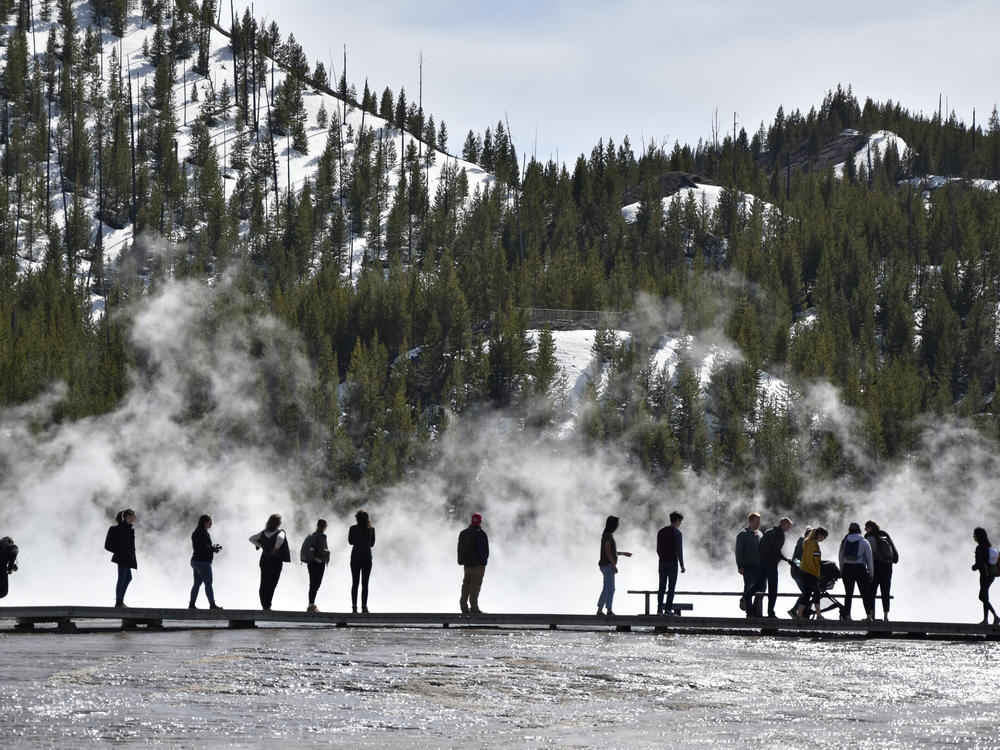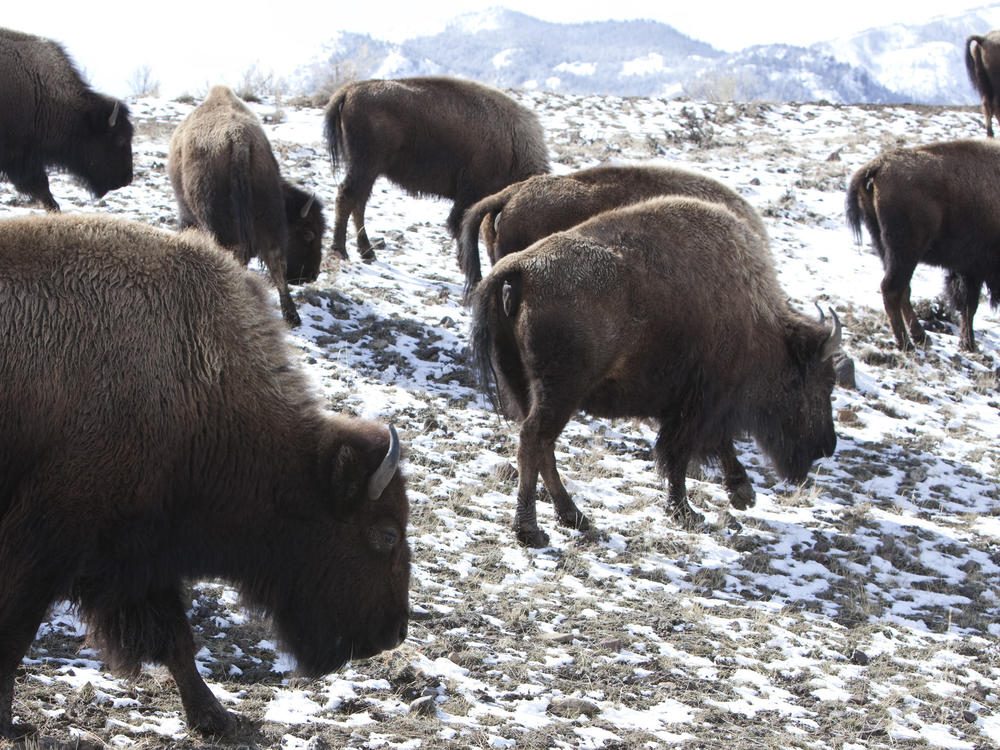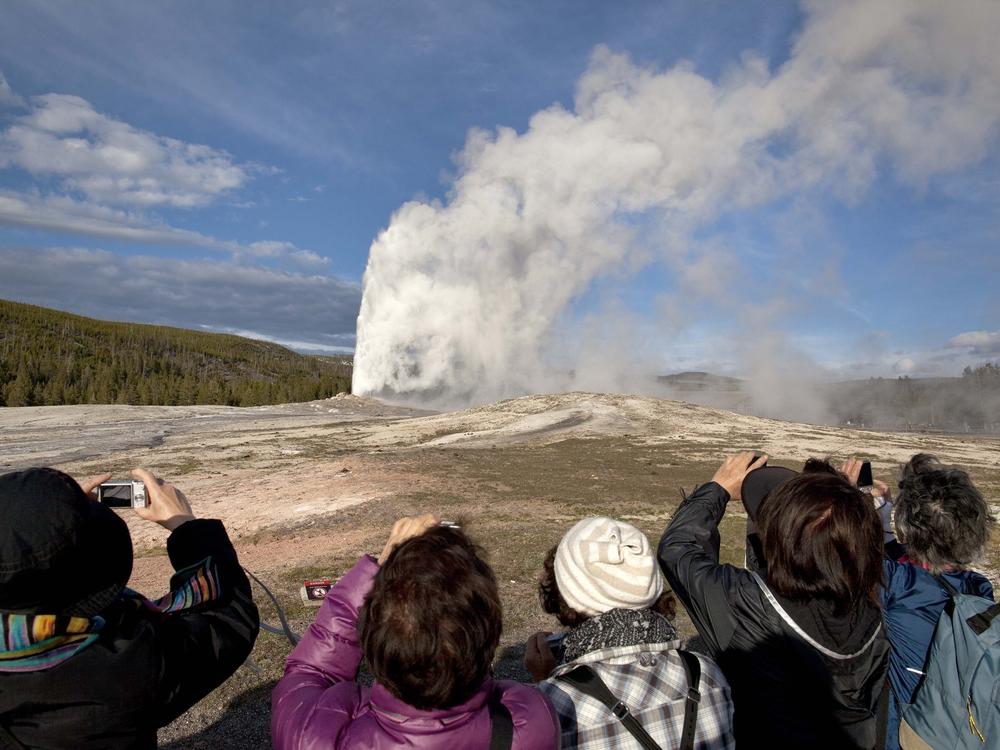Section Branding
Header Content
Yellowstone turns 150. Here's a peek into the national park's history
Primary Content
It's safe to say Yellowstone National Park is still looking good at the ripe old age of 150.
The world famous site became the first national park in the U.S. on March 1, 1872, when President Ulysses S. Grant signed the Yellowstone National Park Protection Act into law.
The park, which stretches into Wyoming, Montana, and Idaho, is known for its unique natural scenery, bountiful wildlife, and deep history. It also helped usher in the broader national park movement in the U.S., according to Chuck Sams, the director of the National Park Service.
The NPS now has 63 parks across the country. Sams said Tuesday's anniversary was a celebration bigger than just Yellowstone.
"We also celebrate something much bigger than the park itself—the beginning of the national park idea, an idea that spread through the country and around the world, inspiring governments to protect natural and cultural treasures 'for the benefit and enjoyment of the people,'" he said in a statement.
Yellowstone's history stretches back thousand of years
In its history before it became a national park, Yellowstone was home for thousands of members of Native American tribes — many of whom walked the same trails visitors do today.
Members of dozens of tribes including the Kiowa, Blackfeet, Cayuse, Coeur d'Alene, Shoshone, and Nez Perce have interacted with Yellowstone for the past 11,000 years, according to the U.S. Geological Survey.
The Indigenous population was eventually pushed out of Yellowstone entirely. For a time, the park officials promoted Yellowstone as a location previously untouched by humans — including even by Native Americans.
Nature's draw brings millions of visitors each year
Yellowstone's famous Old Faithful geyser is just a part of a vast collection of geothermal features within the park. According to the NPS, there are over 10,000 hydrothermal sites — such as hot springs or geysers — which make up half of the world's collection of active geysers.
Yellowstone is also home to the largest concentration of mammals in the lower 48 states. Bears, wolves, coyotes, moose, and a large population of small animals can be found in the park.
It's also the only place in the U.S. where bison have lived continuously since prehistoric times. It was looking dicey for a period in the 1900s, when the animal was hunted down from a previous high of tens of thousands to less than two dozen. This bison conservation effort continues to this day.
Throughout the park's history, stories of many visitors interfering with the wildlife have made headlines. Recently, a woman received a four day jail sentence for getting too close to grizzly bears.
It's Yellowstone's natural beauty and deep history that brings millions of visitors each year.
Yellowstone shut its gates in March 2020 due to coronavirus concerns and remained closed for nearly two months. But the park broke attendance records after it reopened.
The park reported 4.9 million recreation visits in 2021 — up 28% from 2020 and making it the busiest year on record. July 2021 was the most-visited month in Yellowstone's history and the first time visitation exceeded 1 million visits in a single month.
"Yellowstone's 150th anniversary is an important moment in time for the world," said Yellowstone Superintendent Cam Sholly. "It's an opportunity for us to reflect on the lessons of the past while focusing our efforts to strengthen Yellowstone and our many partnerships for the future."
Copyright 2022 NPR. To see more, visit https://www.npr.org.




